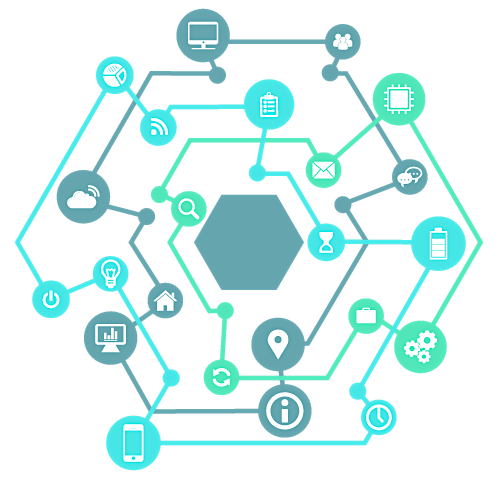3 Ways Networking Services Can Simplify Network Management
Organizations rely on networks to power their work. Networking services can ease network management in nearly every industry.

Think of networking services as technology’s orchestra conductor, but instead of managing musicians you’re managing a bunch of applications and data that your business depends on.
Networking services track all the data and applications a company is using on their chosen network and coordinate their traffic across cloud boundaries.
Most business networks’ bandwidth and scale continue to increase, due to ever more complex rendering and compute requirements.
Cyber criminals are constantly exploiting flaws in network security to carry out malicious attacks against businesses of all sizes.
The right networking services orchestrate note-perfect network performance. Being prepared is crucial in order to successfully defend against a potential cyber incident.
3 Ways Networking Services Simplify Network Management
Networking services are important because highly functioning networks add tremendous value to organizations. The three technology benefits illustrate this exciting promise and showcase how networking services support them.
These benefits also address concerns that are top of mind for many organizations—provisioning the growing remote workforce, making use of the data they collect, and boosting network security.
#1: Giving Remote Workers Secure Resource Access
Equipping remote workers with the right tools—including network connectivity tools and security tools—will become increasingly important.
Employees want flexibility to work from anywhere, while hybrid work is expanding the attack surface. As a result, organizations must secure access to resources and satisfy increasingly complex regulations.
With networking services, companies can use universal secure connectivity to give even their remote workforce access to their on-premises and cloud resources from anywhere.
Among the organizations that have moved to a fully remote or hybrid workforce are government agencies, which must satisfy some of the most restrictive regulations to protect sensitive data.
Expert statistics show:
- The remote workforce will keep growing in 2023—after reaching 25% of all professional jobs in North America at the end of 2022.
- The number of mobile workers is expected to grow from 78.5 million in 2020 to 93.5 million in 2024.
- These network users—sometimes called “deskless workers”—will make up nearly 60% of the US workforce by late 2024.
All those workers need devices to connect. The number of 5G connections is predicted to rise to 1 billion worldwide by mid-2023 and 2.6 billion in 2025, according to a CCS Insight study.
The demographic trend of “productivity paranoia,” where workers are eager to prove they can be productive from anywhere, also will contribute to new networks and new devices that need to be connected and secured.
Remote work requirements now range from traditional office productivity tools to very complex software and system requirement for applications such as media rendering and CAD.
It’s critical that remote and hybrid workers be able to access the underlying compute resources their work relies on. For many companies, these are cloud-based virtual machines, such as Azure general purpose virtual machines or specialized compute virtual machines that run on NVIDIA GPUs.
- App delivery services can ensure that those remote workers have the resources they need to complete tasks.
- Monitoring services give IT a comprehensive view of network resources and diagnostics, with telemetry data to keep everyone working without interruption.
- Other technology solutions enable employees, vendors, and partners to access internal and cloud apps.
Other potential remote work scenarios that could benefit from networking services include the following:
- Connected field service in manufacturing through a combination of IoT diagnostics, scheduling, asset maintenance, and inventory optimization.
- Geospatial analytics to help energy sector companies gain deeper insights around key decisions in a scalable, cost-efficient manner.
#2: Maximizing The Value of Edge Intelligence
Edge devices—everything from car systems to temperature sensors on the manufacturing floor—are collecting more data than ever.
Collecting all that data takes a strong network. Connecting all that data so you can derive business intelligence from it takes networking services.
With edge devices proliferating all the time, the challenge may seem impossible but services like Azure Traffic Manager can help by routing traffic based on priority, geography, and performance.
With Networking Services, Companies Can:
- Save money on troubleshooting issues.
- Increase staff productivity.
- Meet safety and compliance requirements.
In the automotive industry, for instance, networking services capabilities can lead to connected car solutions and mission-critical real-time insights.
Other popular edge intelligence use cases include gaining situational awareness of what’s happening on oil and gas offshore rigs and creating smart building solutions in real estate.
#3: Enhance Cyber Security To Better Protect People and Data
Traditional security measures have been stretched to the breaking point by increasingly sophisticated attacks.
Security solutions can secure:
- Apps and network infrastructure.
- Automate network attack alerts.
- Boost security at the edge.
- Increase app availability and performance.
- Protect the network from common attacks.
Employing these networking security solutions can enhance protection across industries:
- Healthcare providers can better protect patient privacy while securely accessing data from Internet of Things devices, driving improved patient outcomes. And as virtual healthcare visits grow more common, healthcare workers can benefit from networking services as remote workers too.
- Financial services employees can track financial transactions across the banking credit card network, preventing fraud with AI-based predictive risk modeling.
- Retail workers can use advanced video surveillance and analytics capabilities to monitor storefront events, offer frictionless checkout, and optimize stock replenishment.
How To Choose Networking Services
When choosing a networking services solution, prioritize a collection of services that make it easy to do all of the following:
- Migrate apps and workloads
- Easily detect anomalies
- Optimize for superior performance
- Increase the security and resiliency of operations
Networking services break down into specialty areas, which can be mapped to your organization’s needs.
Four Major Networking Services Categories:
- Connectivity
- Network Security
- Application Delivery
- Network Monitoring
Networking services can have a tremendous impact on an organization. Among the exciting possibilities, the right networking services solution can ease the complexity of remote work, maximize the value of edge intelligence, and tighten security to better protect people and data.









InternationalNews
January 10, 2024My brother suggested I might like this website He was totally right This post actually made my day You cannt imagine just how much time I had spent for this information Thanks
Joenews
January 22, 2024I have read some excellent stuff here Definitely value bookmarking for revisiting I wonder how much effort you put to make the sort of excellent informative website